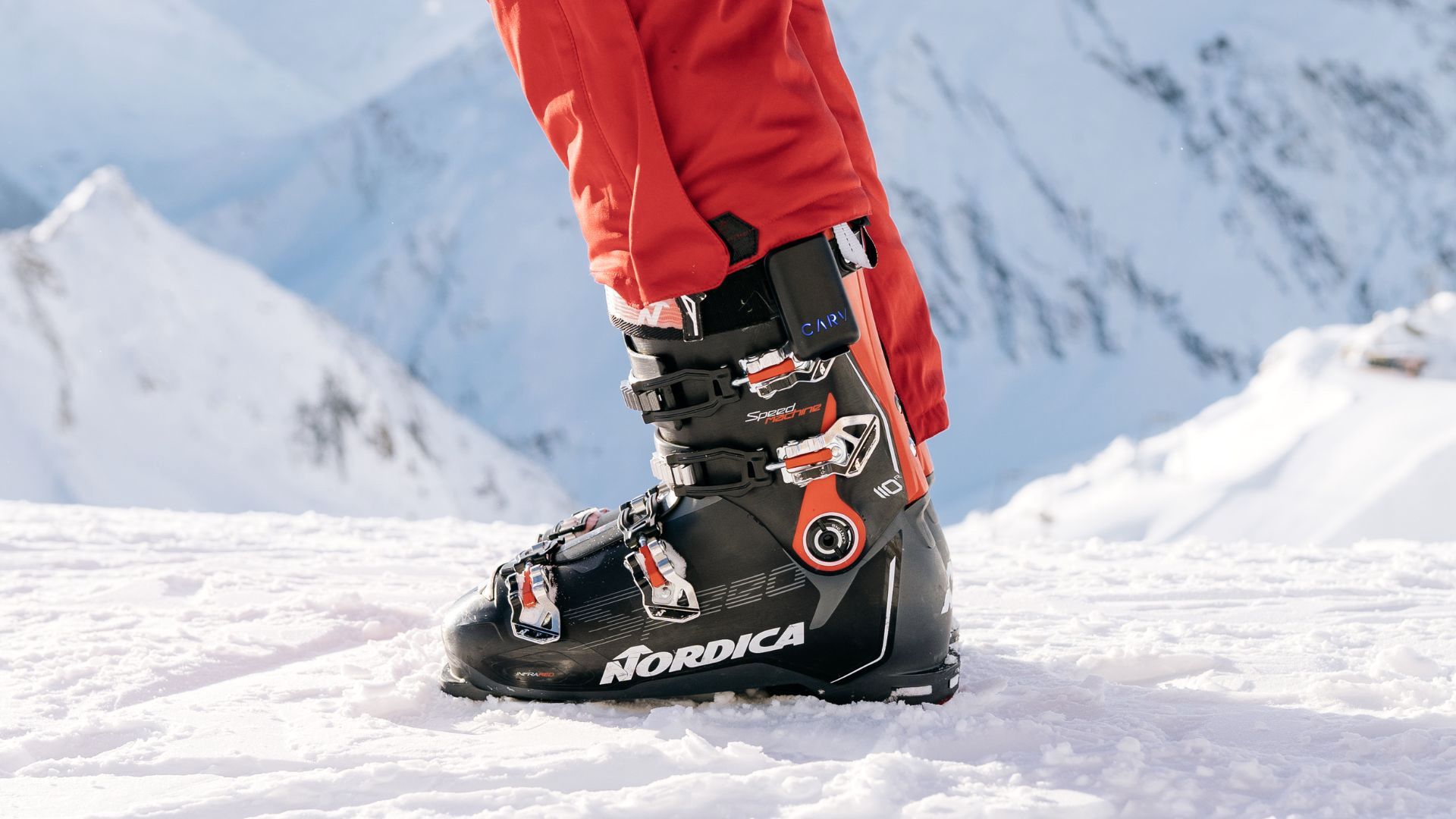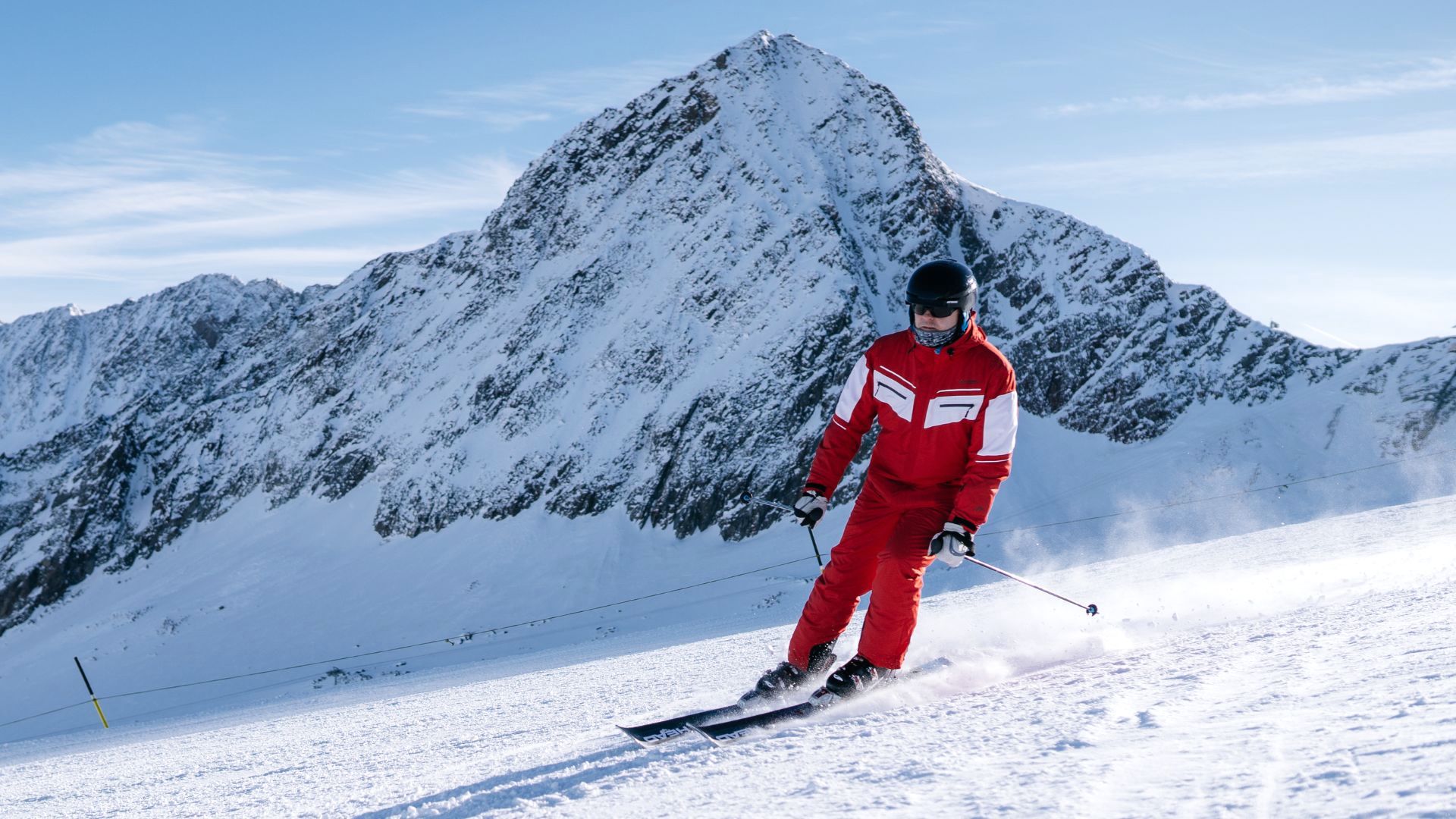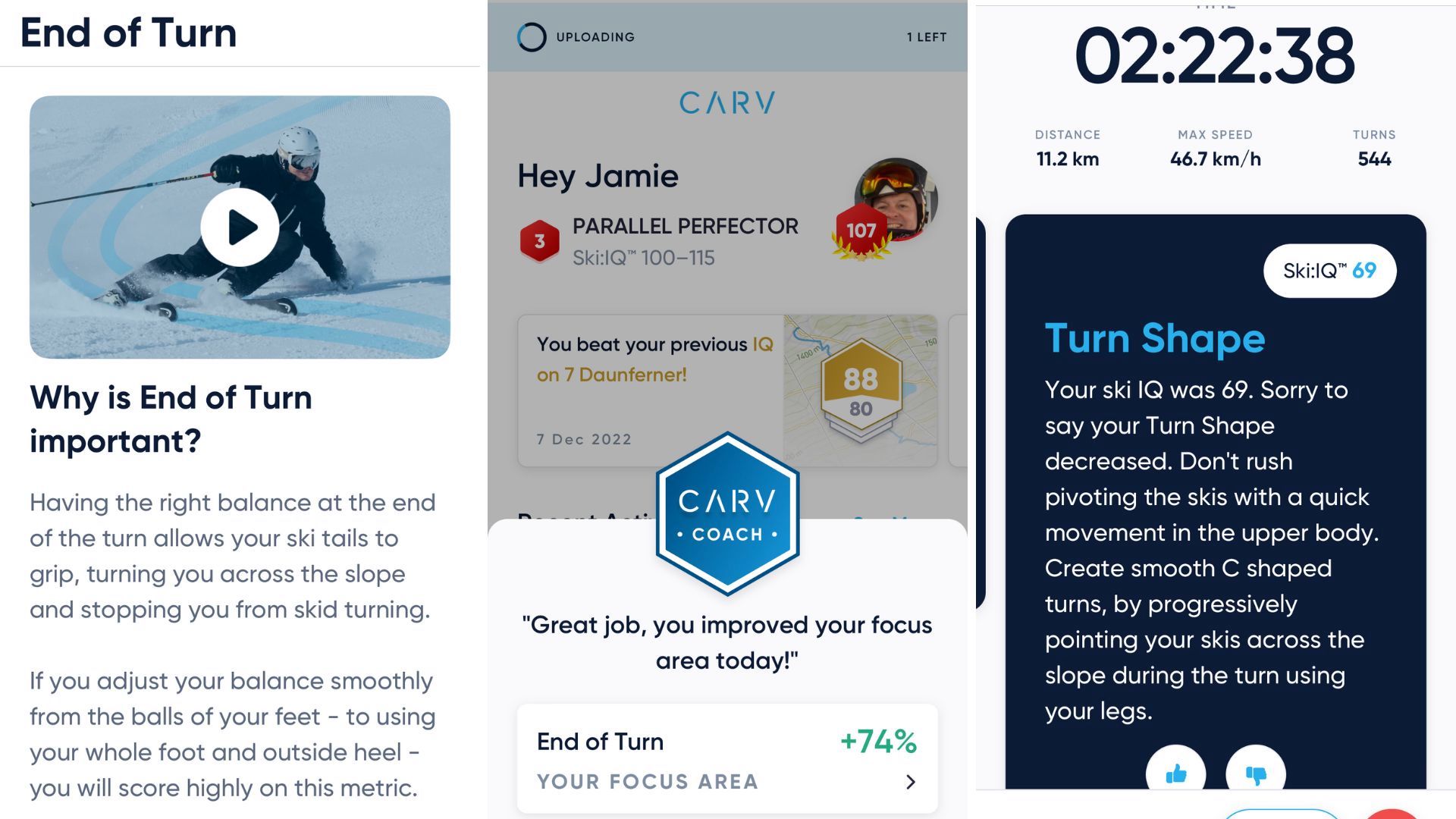I spent seven days with a virtual ski instructor
The Carv Digital Ski Coach kept me focused on technique rather than keeping up with friends – and it’s so easy to use


“You have boot heaters, yes?” The ski shop sales assistant is pointing at the small battery packs I’m clipping onto the Velcro strap that tightens a ski boot around the shin. I shake my head. “Ah, it’s GPS, right?” says a passing customer. It’s not that, either. “It’s a digital ski instructor – it tells me how bad I am!” I say.
And that’s Carv in a nutshell. It consists of inserts, each with 36 pressure sensors, that slip into a ski boot linked to a small battery-powered Bluetooth tracker. Together with the sensors in a smartphone – accelerometer, gyroscope and magnetometer – it records every tiny movement I make, from the angle of my skis, the pressure I put through each foot and exactly how similar (or otherwise) my ski are to each other.
Funnelling all the data it collects into an app and then relaying audio feedback and tips to me in real-time as I ski, Carv is an attempt to digitise a ski lesson.

Carv in action
During a week in Les Trois Vallées in the French Alps I tried all the modes, from free ski (which gives you a ‘Ski IQ’ score out of 165 when you get on a lift or gondola) through drills for edge angle, fast turns and carving to the new ‘Train with an Olympian’ mode. It was never easy, and my inability to learn quickly meant that some of the audio feedback was repetitive.
After all, I’m no expert skier. I’ve had a few lessons and been on over 10 ski trips. Yet because I usually only ever ski once a year I always feel rusty as hell when I get out on the piste each winter. Ski for one day, book a lesson on day two. That’s what I always tell myself to do next time I go skiing, but lessons are so expensive I rarely get around to the latter. Carv is also expensive, but it’s priced to help you avoid spending even bigger on lessons.
- Check out the best ski jackets
- Browse the best ski pants
- Explore the best base layers for skiing
- And if you need new eye protection, view the best ski goggles

Is Carv good value?
In the French Alps a one-hour private lesson will cost you about €69. For an entire day it’s €450. The very cheapest option is €47 for a two-hour group lesson with five others. Carv costs UK£199/US$199 for the hardware while its best value subscription fee is UK£99/US$149 per year if you sign-up for two years.
A skier friend of mine balked at the idea of paying a fee just to access the app when you had already purchased the hardware. That’s old thinking. Hardware is the easy bit; it’s the AI analysis that’s the real magic with Carv and – if you would normally opt for a lesson each time you go skiing – it pays for itself.
Get all the latest news, reviews, deals and buying guides on gorgeous tech, home and active products from the T3 experts

The best way to use Carv
That’s the theory, but the truth is more subtle. Having used it for an entire week I think the best option is to pay for a two-hour lesson as well, just to have someone physically drumming into you the confidence to go faster, point your skies downhill for longer and all the other things that I find difficult during the first few days of a ski holiday.
But Carv is good for taking you further – and for keeping your mind focused on skiing better, not faster. Best of all, it only focuses on how to improve, not how bad you are. Its advice was always tailored and accurate, with utterances such as “we’ve detected your turns are too short” and “point your skis downhill for longer before making a turn.”

Learning from Carv
At the end of each session, the Carv app sent me a notification updating me with my average Ski:IQ and imploring me to review my new focus areas, each of which came with statistics and educational videos. The latter are crucial if you’re to consistently learn from Carv (and so are the fitness videos for the 10 weeks before you go skiing!).
However, it pays to restrict video-watching while out skiing; during one session I found a dropped iPhone in the snow crisis-crossed with ski marks – a reminder that it’s not a good idea to check your phone while on chairlifts. Carv does have a few Siri shortcuts, though it could have a lot more.

Carv’s new video feature
If you’re the kind of skier who wants to keep up with friends, thinks doing steep red runs rather than breezy blues because of the kudos, and generally treats skiing as competitive then Carv isn’t for you. In fact, Carv works best when everyone in a group uses it.
That’s especially true now because of a new video feature; you can easily link to a friend using Carv and take a portrait-shape video of them, which automatically downloads into their app complete with AR overlays of their Ski: IQ. It works really well, but only if you prepare properly. For example, you need to find a slope with the ideal pitch and condition to allow your companion to ski down it quickly and confidently, and preferably close to where you’re filming. Sadly it’s not possible to zoom-in while filming.

Final thoughts – are Carv and I still friends?
Good company and detailed enough to be used for years, Carv was at its best when I committed to it, watched all the videos and went back down the same runs in an effort to get a better score.
Aside from Carves inability to recognize when I was skiing (badly) over moguls or ice – for which it offers no advice – the only sad news is that on my way home to London on the ski train the Carv app notified me that the algorithms had been updated and that my Ski:IQ had been recalculated … downwards.
Technically, I ended up a worse skier at the end of the week than I had been at the start, but at least it’s good to know that Carv and it’s all-important algorithms are constantly being improved.
Jamie is a freelance journalist, copywriter and author with 20 years' experience. He's written journalism for over 50 publications and websites and, when he's not writing, spending most of his time travelling – putting the latest travel tech through its paces.
